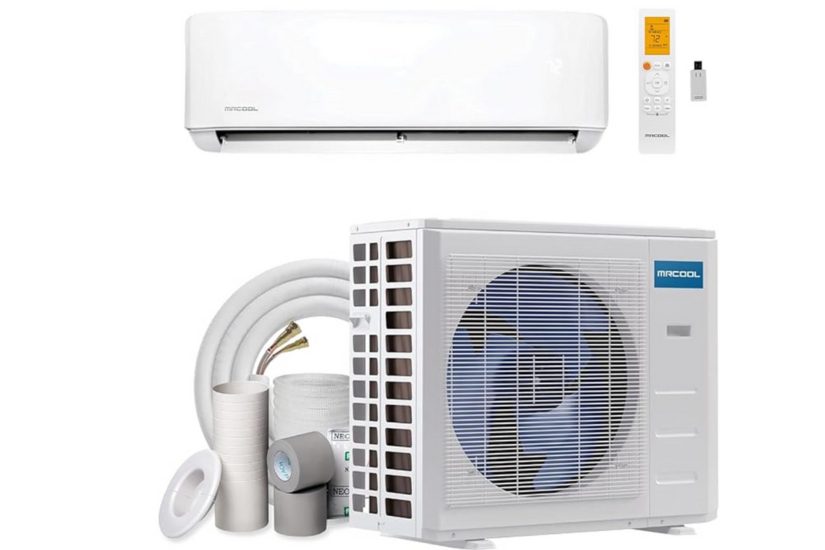
Creating a garden for National Hummingbird Day is a wonderful way to attract these tiny flying jewels to your yard! To make your space more attractive to hummingbirds, focus on bright flowers like bee balm, trumpet vine, and other vibrant blooms that are rich in nectar. Colors like red and pink are especially appealing to these little birds, so be sure to include plenty of them. By planting a mixture of various flowers, you can ensure there’s always something in bloom, providing a constant feeding source for your tiny visitors. Let’s dive into some exciting ideas on how to turn your garden into a hummingbird paradise!
Want to know how to make your garden a special place for hummingbirds? With bold, colorful flowers that attract them, you can easily create a hummingbird haven. Adding a variety of plants ensures there’s nectar available all year round, making your yard a favorite stop for these delightful creatures.
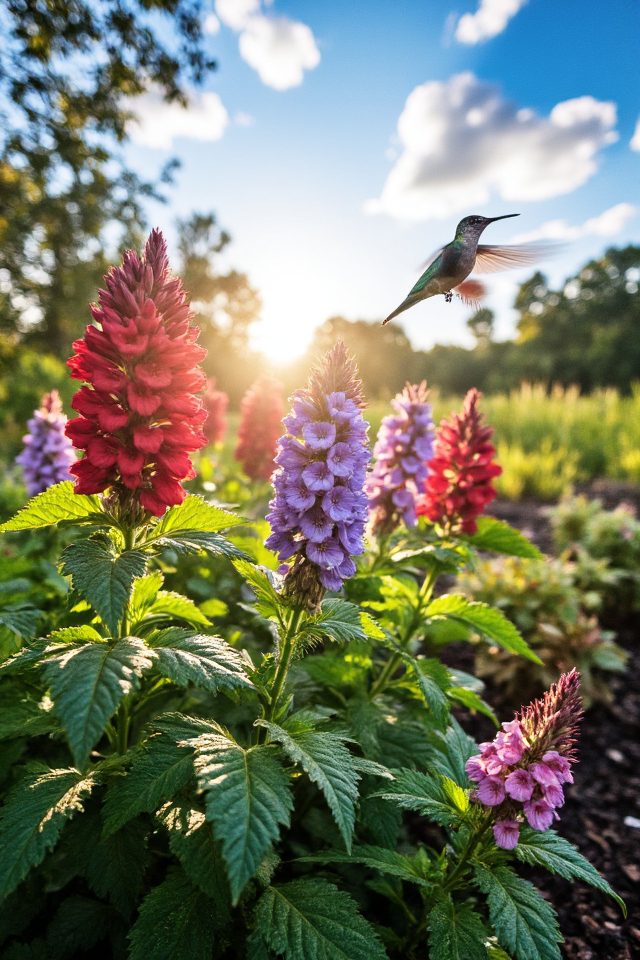
Planting bee balm (Monarda) is an excellent way to attract hummingbirds while adding vibrant color to your garden.
With its tubular flowers that come in shades of red, pink, and purple, bee balm not only draws in hummingbirds but also bees and butterflies.
These perennials thrive in sunny locations with well-drained soil and bloom from mid-summer to early fall, providing a continuous food source for your feathered friends throughout the season.
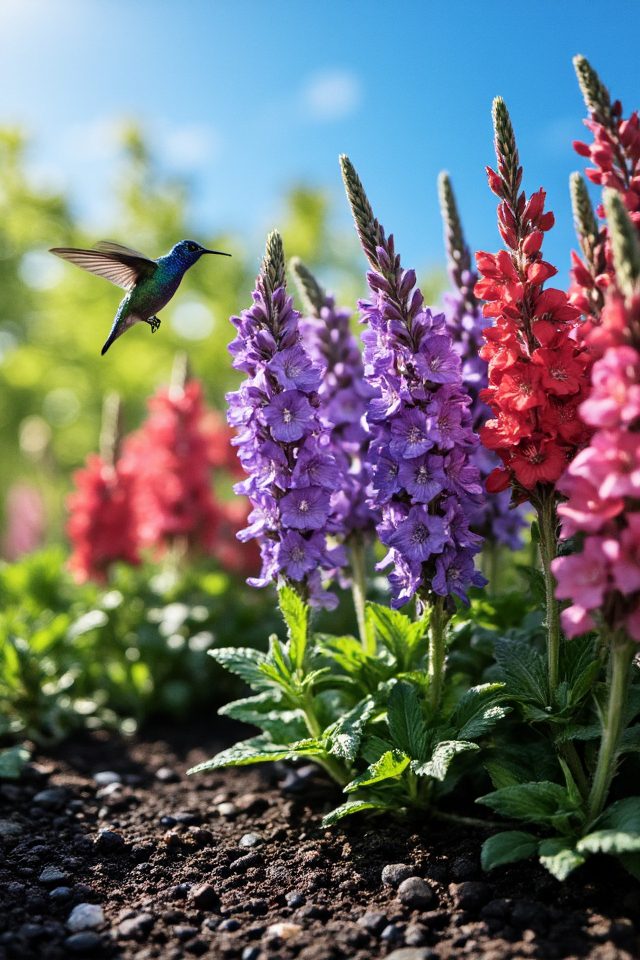
Salvia is an excellent choice for attracting hummingbirds to your garden, thanks to its vibrant flowers and rich nectar content.
These perennial plants bloom in various shades of red, purple, and pink, adding both beauty and excitement to your outdoor space.
Planting salvia in sunny areas encourages the growth of these striking blossoms, which serve as a reliable food source for hungry hummingbirds, ensuring they’ll frequent your garden throughout the warmer months.
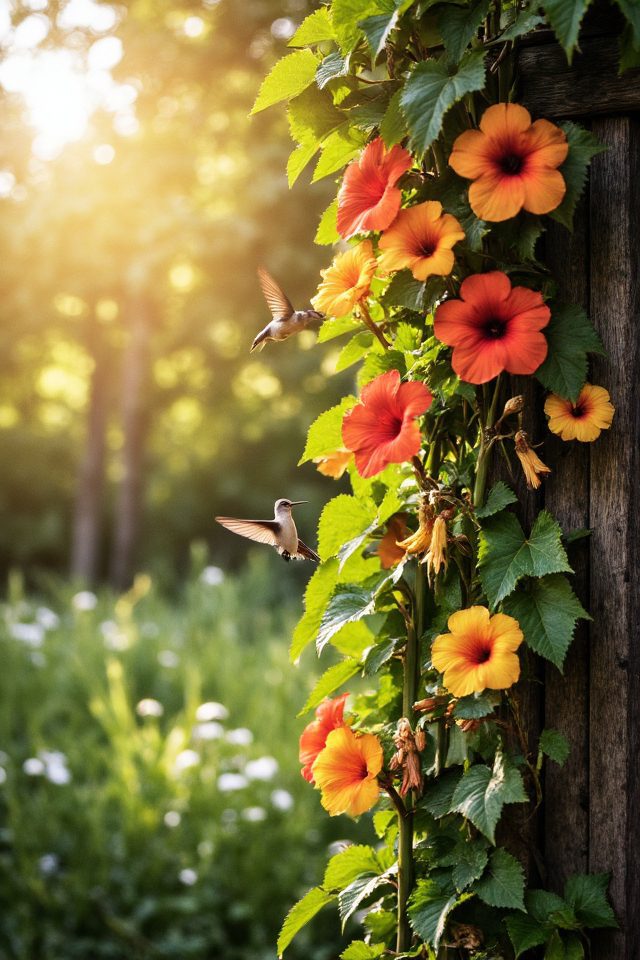
Trumpet vine (Campsis radicans) is an excellent choice for creating a nectar oasis in your garden that attracts hummingbirds.
With its vibrant, trumpet-shaped flowers in shades of orange and red, this climbing vine not only adds stunning visual appeal but also provides a rich source of nectar.
The blooms thrive in full sun and are drought-tolerant, making them ideal for low-maintenance gardens.
Plant trumpet vine near trellises or fences, allowing it to grow upwards while luring in these delightful creatures.
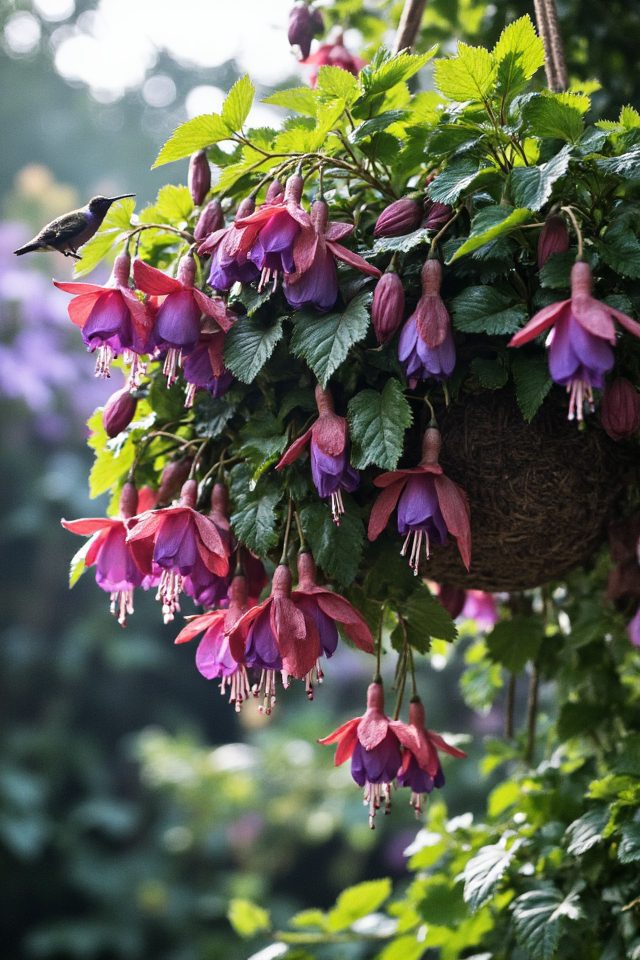
Fuchsia plants are a vibrant addition to any hummingbird garden, offering exquisite, pendulous blooms that attract these beautiful birds.
With their cascading foliage and striking colors, fuchsias can create a delicate, enchanting atmosphere.
Plant them in hanging baskets, window boxes, or as part of a mixed floral bed for maximum visual impact.
Their nectar-rich flowers bloom throughout the warmer months, ensuring your garden remains a buzzing hub for hummingbirds all season long.

Scarlet sage (Salvia splendens) is an excellent choice for attracting hummingbirds to your garden.
With its vibrant red blooms, it creates a striking visual that draws these colorful birds in. Not only does the vivid color stand out, but the tubular shape of the flowers provides a perfect nectar source for hummingbirds, making it a preferred feeding spot.
Plant scarlet sage in sunny areas with well-draining soil to maximize its growth and entice these pollinators into your outdoor space.
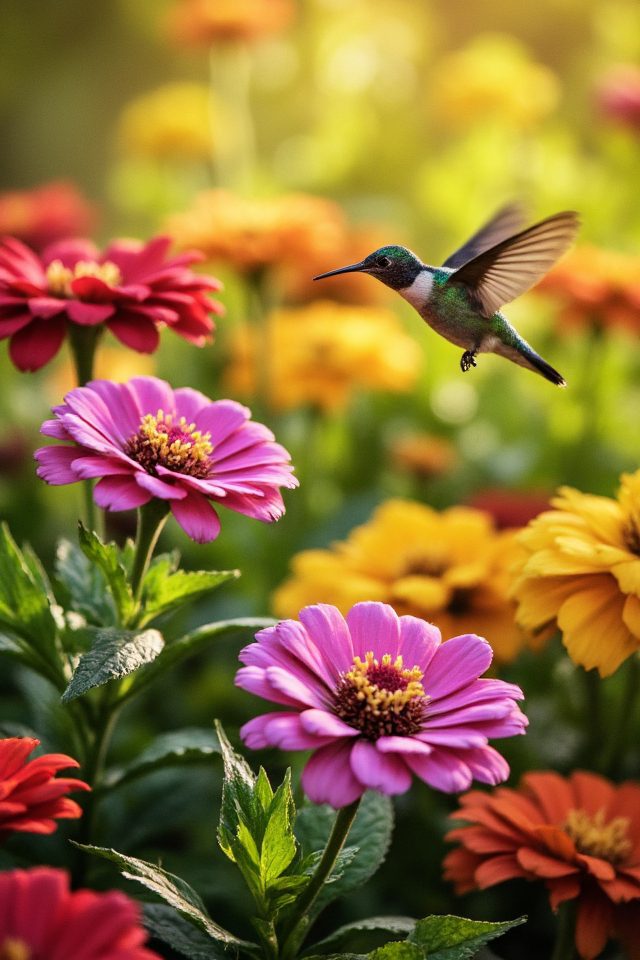
Zinnias are a fantastic addition to any hummingbird garden, offering vibrant blooms that attract these marvelous creatures.
With their bright colors ranging from reds and pinks to yellows and oranges, zinnias not only add aesthetic appeal but also provide a reliable nectar source for hummingbirds.
Their easy-to-grow nature makes them perfect for novice gardeners, and they thrive in full sun, ensuring your garden is alive with color and activity all summer long.
Consider interspersing various zinnia varieties to create an eye-catching display that delights both hummingbirds and onlookers alike.
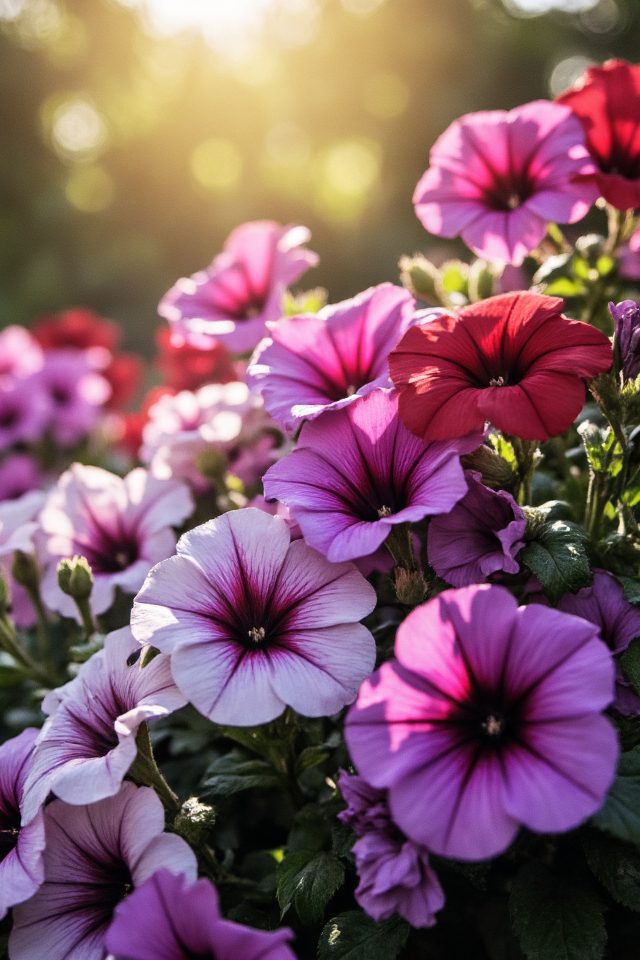
Petunias are a fantastic choice for attracting hummingbirds while providing vibrant, long-lasting blooms in your garden.
These colorful flowers flourish in sunny spots and come in a variety of shades, from bold purples to soft pastels. They bloom from spring through fall, offering an extended season of interest.
Simple to care for, petunias thrive in well-drained soil and require regular watering. Their nectar-rich flowers make them irresistible to hummingbirds, ensuring your garden is both lively and beautiful.
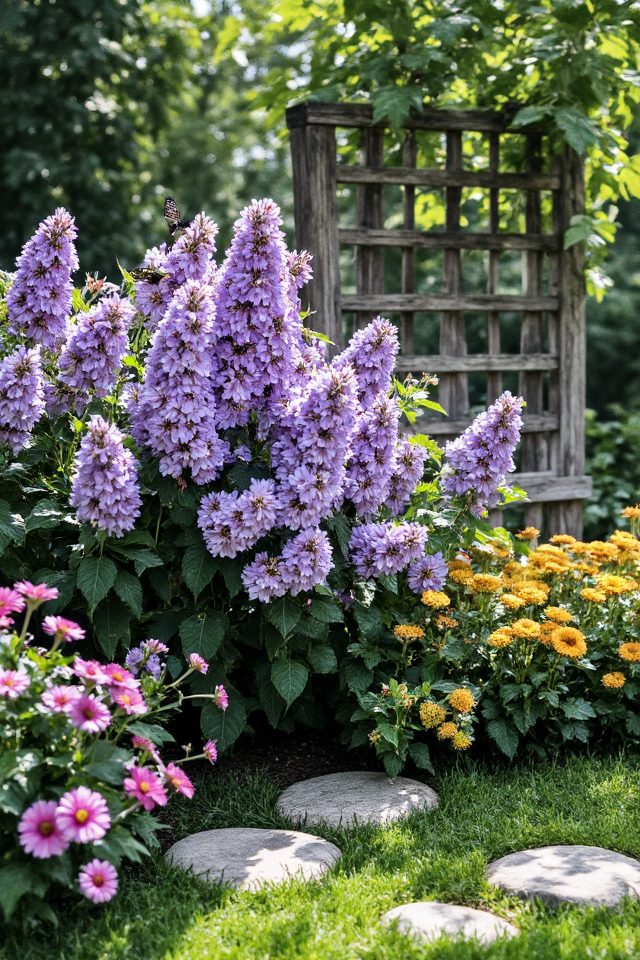
Creating a butterfly bush haven is a delightful way to attract both hummingbirds and butterflies to your garden.
Choose varieties like Buddleja davidii, known for their fragrant blooms and vibrant colors, to provide a feast for these pollinators.
Plant them in clusters to create a stunning visual impact and enhance their scent.
Position the bushes in a sunny spot with well-drained soil, and surround them with other nectar-rich plants to guarantee a bustling ecosystem.
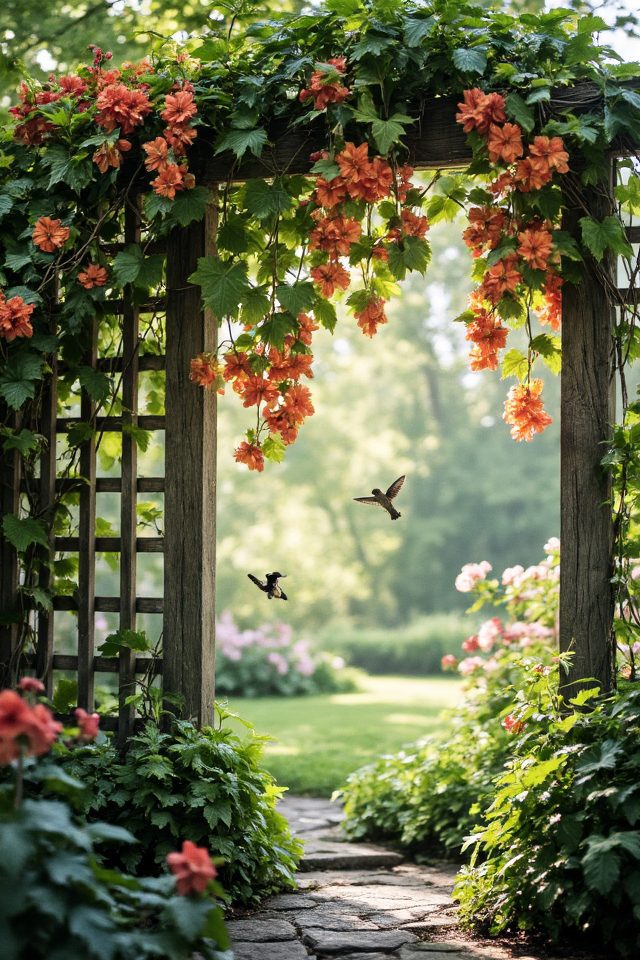
Integrating Coral Honeysuckle (Lonicera sempervirens) into your hummingbird garden adds both climbing beauty and vibrant color.
This deciduous vine features tubular red and orange flowers that are particularly attractive to hummingbirds, as they provide a rich nectar source.
Plant it near trellises, fences, or arbors to create vertical interest and a natural habitat for these feathered visitors.
The lush, green foliage complements the flowers and provides a serene backdrop, enhancing your garden’s overall appeal.
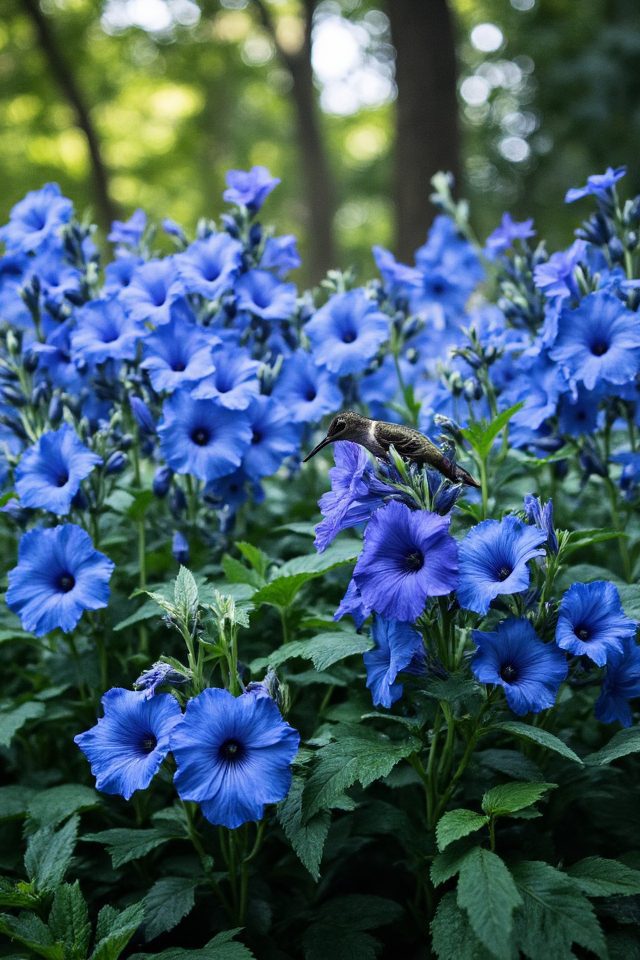
Lobelia is an excellent choice for attracting hummingbirds with its vibrant blue blooms.
These cascading plants thrive in both garden beds and containers, adding a splash of color to your space. With their prolific flowering from spring to frost, lobelias create a mesmerizing display that contrasts beautifully against green foliage.
Their tubular flowers are perfect for hummingbirds to access nectar, ensuring your garden remains a lively haven for these enchanting creatures.
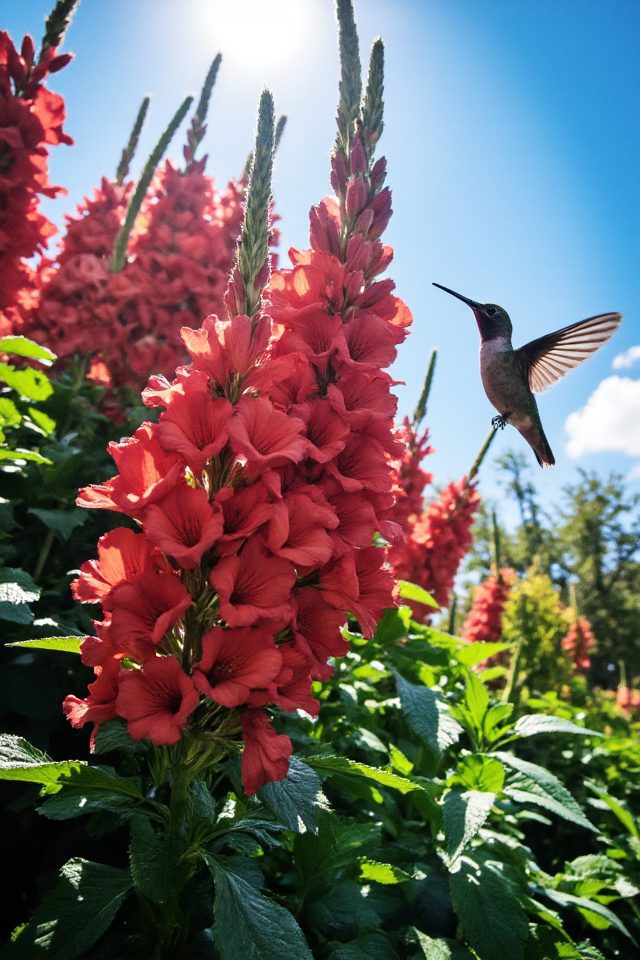
The Cardinal Flower, with its striking red blossoms, makes a bold statement in any garden designed to attract hummingbirds.
This perennial thrives in moist, well-drained soil and partial to full sun, providing a vibrant splash of color from mid-summer to early fall.
Its trumpet-shaped flowers aren’t only visually stunning but also serve as an essential nectar source for hummingbirds.
Plant them in clusters for maximum impact and to create a lively, inviting habitat for these delightful pollinators.
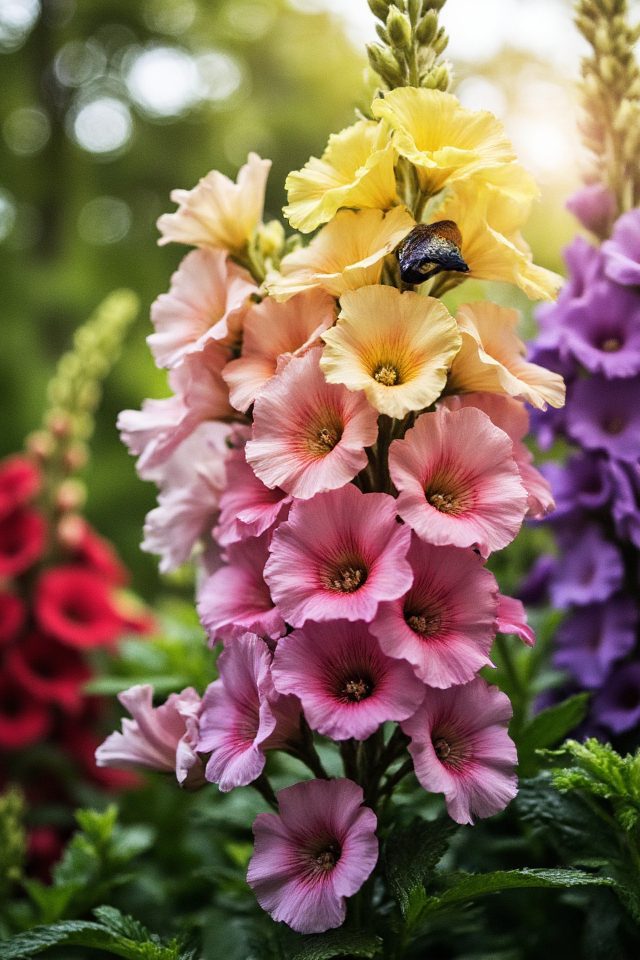
Snapdragons are an enchanting addition to any hummingbird garden, offering vibrant colors and unique flower shapes that draw these pollinators in.
With their tubular blooms, snapdragons provide a reliable nectar source for hummingbirds, making them an essential choice for attracting these delightful creatures.
Available in a variety of hues, from soft pastels to bold brights, they not only enhance the aesthetic of your garden but also create a lively environment filled with activity and charm.
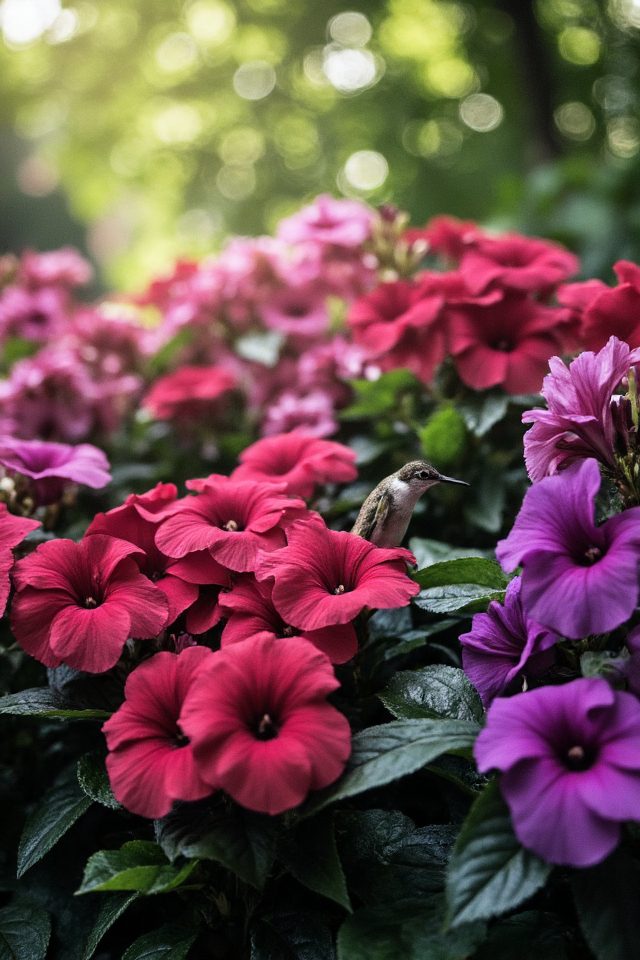
Adding impatiens to your hummingbird garden is a fantastic way to introduce vibrant color, particularly in shady spots.
These versatile flowers come in a variety of bright shades, including pink, red, and purple, making them a popular choice for enhancing the allure of your garden.
Their soft, lush foliage provides a perfect backdrop while attracting hummingbirds with their nectar-rich blooms.
Planting impatiens in clusters can create eye-catching focal points, ensuring your garden is both beautiful and appealing to these delightful creatures.
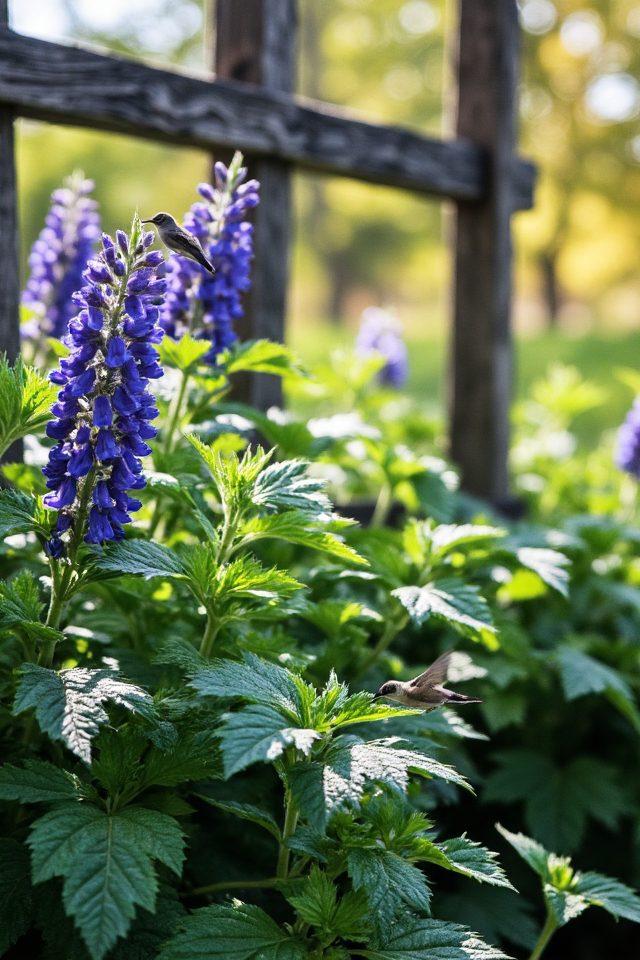
Catmint (Nepeta) is an excellent choice for attracting hummingbirds while adding a delightful fragrance to your garden.
Its aromatic foliage and vibrant blue-purple flowers bloom from spring to fall, providing a continuous source of nectar. Hummingbirds are particularly drawn to the tubular shape of the flowers, making them an ideal feeding source.
Additionally, catmint thrives in well-drained soil and full sun, making it a low-maintenance yet beautiful addition to any hummingbird garden.
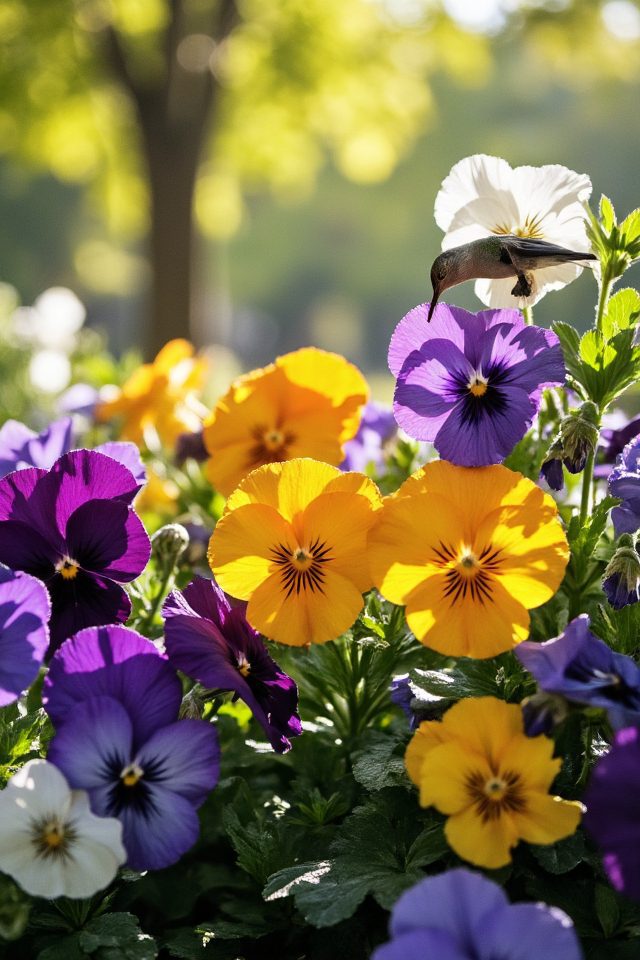
Pansies are vibrant, versatile flowers that can greatly enhance your hummingbird garden. Their bold colors—ranging from deep purples to bright yellows—attract not only hummingbirds but also a variety of pollinators.
Pansies thrive in cooler temperatures, making them perfect for early spring and fall gardens. Plant them in clusters to create a stunning visual contrast and provide a reliable nectar source.
With their cheerful blooms and rich fragrance, pansies will surely make your garden a hummingbird haven.
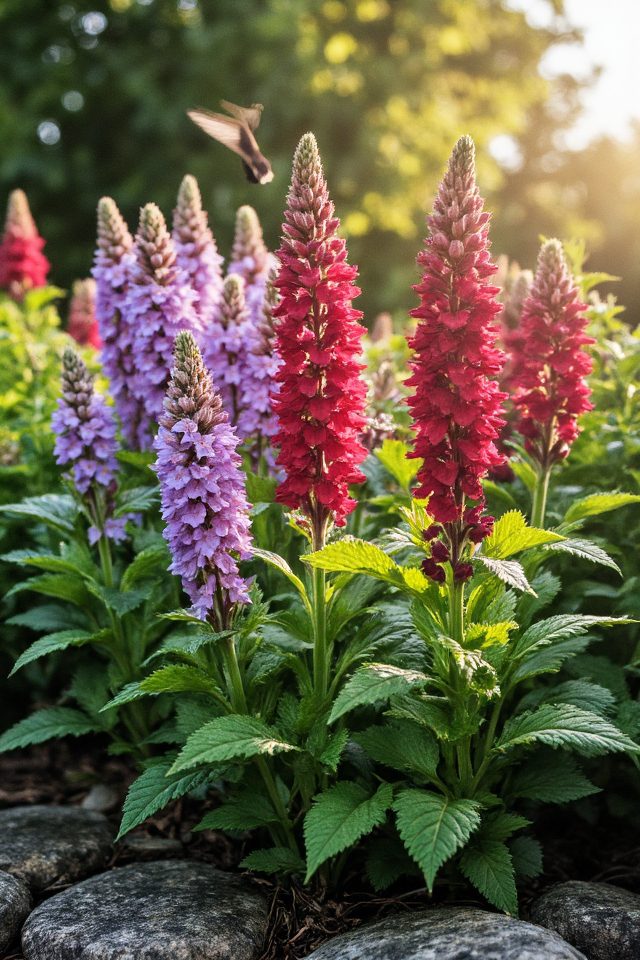
Monarda, commonly known as bee balm, is a fantastic choice for creating unique shapes in your hummingbird garden.
Its vibrant flowers, which come in various hues like pink, purple, and red, add visual interest while attracting these beautiful birds. The plant’s bushy growth habit allows for creative shaping, whether through pruning or selecting different varieties.
Additionally, its aromatic foliage helps repel pests, making it a practical and attractive addition to any garden designed for hummingbirds.

Mixing in coneflowers in your hummingbird garden not only adds vibrant bursts of color but also creates a natural, wildflower feel that attracts these delightful birds.
Featuring shades of pink, purple, and white, coneflowers are hardy perennials that thrive in various conditions. Their daisy-like blooms offer a source of nectar, making them a favorite for hummingbirds.
This combination fosters a relaxed, inviting atmosphere while encouraging biodiversity and supporting pollinator health.

Geraniums are a fantastic choice for attracting hummingbirds while adding vibrant color to your garden.
These versatile plants thrive in various conditions, making them suitable for both sunny borders and shaded areas. With a wide array of colors and shapes, geraniums can complement other flowering plants, creating a lush habitat for hummingbirds.
Additionally, their long flowering period guarantees a consistent food source, encouraging these delightful birds to visit your garden throughout the season.
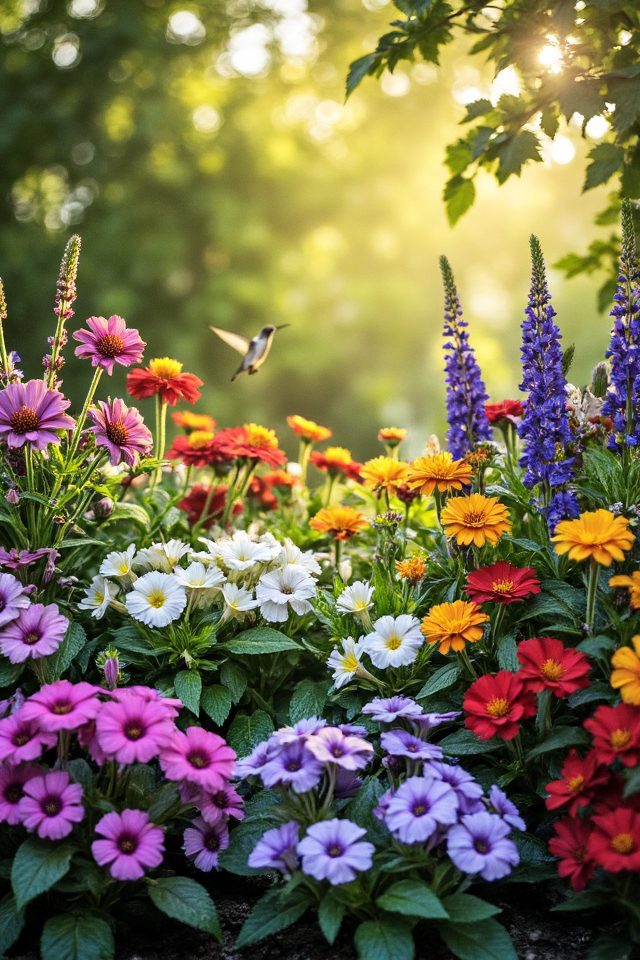
Creating a seasonal blend with annuals and perennials is an excellent way to attract hummingbirds throughout the year.
Annuals, which bloom quickly and continuously, like petunias and zinnias, can provide vibrant colors and abundant nectar during their growing season.
Pair these with perennials such as bee balm and salvia that return each year, ensuring a consistent food source.
By planting a diverse array of flowers, you’ll not only beautify your garden but create a thriving habitat for hummingbirds. The vibrant colors and varying shapes of blooms like bee balm, salvia, and fuchsia will guarantee these tiny visitors keep coming back. Mix annuals and perennials for continuous nectar throughout the seasons. Celebrate National Hummingbird Day by crafting a lively garden that delights you and attracts these fascinating creatures. Happy gardening!

Don't let aphids, slugs, and caterpillars ruin another plant. Take back control with simple, natural methods that actually work.